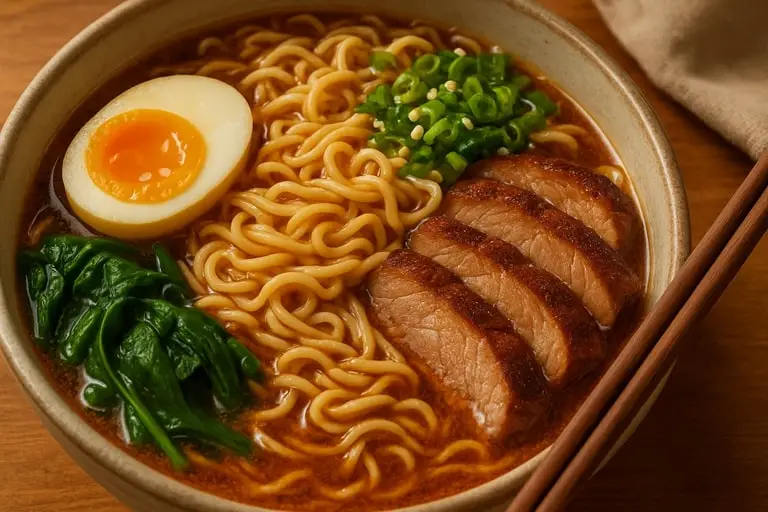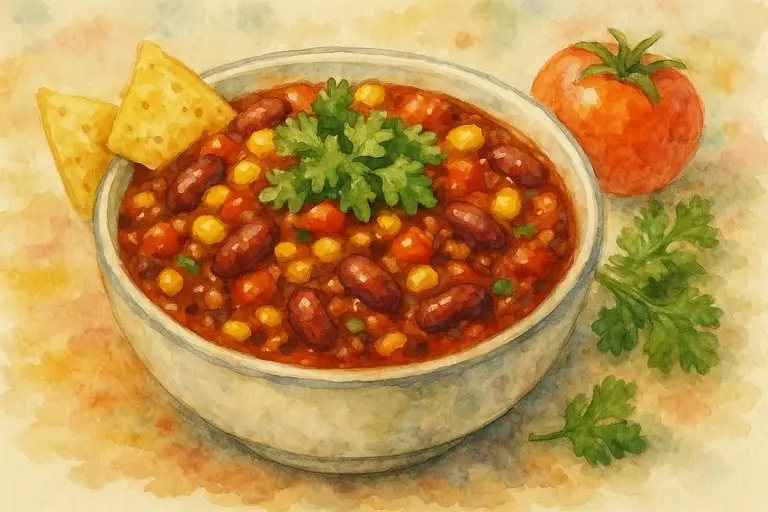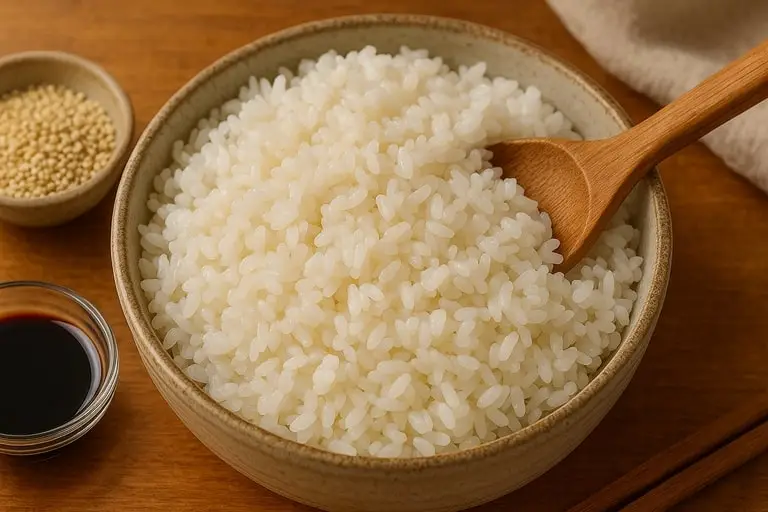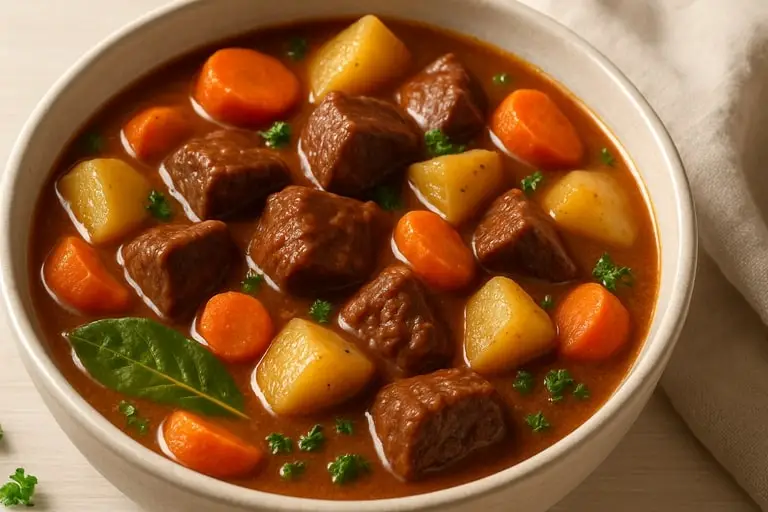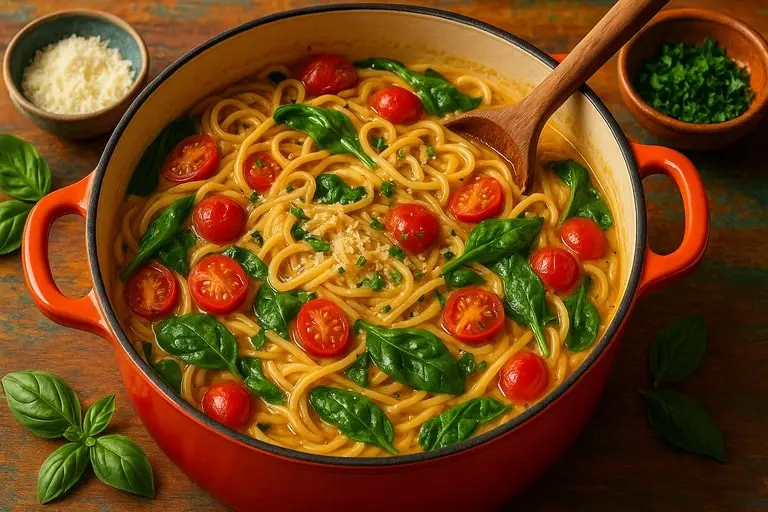The ramen recipe has become one of the most celebrated representations of Japanese cuisine, blending deeply seasoned broth, springy noodles, and an array of toppings into a dish that transcends simple nourishment to embody culture, creativity, and comfort. While its roots lie in Chinese noodle soups, ramen has evolved into a distinctly Japanese creation, shaped by regional identity, culinary innovation, and global adaptation. To understand ramen is to appreciate a dish where technique and tradition merge with personal expression, producing endless variations while retaining a recognizable essence.
The foundation of any ramen recipe is its broth, revered as the soul of the dish. From the clarity of shoyu ramen seasoned with soy sauce to the richness of tonkotsu derived from simmered pork bones, each style reflects regional history and preference. The process of simmering bones, vegetables, seaweed, or dried fish for hours extracts deep layers of umami, creating a broth that defines flavor even before noodles or toppings are added. Patience and precision distinguish exceptional ramen broth, underscoring the artistry involved.
Noodles serve as the second essential element. Made from wheat flour, water, and kansui—an alkaline solution that gives ramen its distinct chew and yellow hue—they provide texture and structure to balance broth. The thickness and curl of noodles vary by style: thin and straight complement creamy tonkotsu, while wavy noodles cling to miso or shoyu broths. A ramen recipe thus tailors noodles to broth, achieving harmony in every bite.
Toppings complete the dish, transforming ramen from simple noodle soup into a layered meal. Slices of chashu pork, marinated soft boiled eggs, bamboo shoots, nori, and scallions each contribute flavor and texture. Variations expand further with corn and butter in Hokkaido miso ramen or spicy chili paste in Kyushu styles. These additions provide individuality, allowing chefs and home cooks alike to personalize recipes while paying homage to tradition.
Culturally, ramen holds profound significance. In Japan, ramen shops represent community hubs where chefs hone signature broths for decades, and diners gather for quick yet memorable meals. Each region boasts unique variations, reflecting local climate, resources, and taste. Abroad, ramen serves as an ambassador of Japanese cuisine, inspiring countless restaurants and adaptations. Its global presence demonstrates how a recipe rooted in tradition can resonate universally while inviting reinterpretation.
The sensory experience of ramen elevates its status. The fragrance of simmering broth, the sound of noodles slurped—a gesture of appreciation in Japan—the sight of a steaming bowl crowned with toppings, and the warmth of broth in hand engage multiple senses. Eating ramen becomes ritual, blending nourishment with performance and community, ensuring its place in both memory and identity.
From a nutritional perspective, ramen reflects diversity. While instant versions lean toward convenience, traditional ramen recipes balance carbohydrates from noodles, protein from toppings, and minerals from broth. Depending on preparation, ramen can range from light and restorative to rich and indulgent, adapting to individual needs and contexts. This versatility reinforces ramen’s enduring appeal.
Professional kitchens treat ramen as canvas for creativity. Chefs experiment with broths infused with truffle, miso blended with chili, or noodles crafted from alternative grains. Gourmet interpretations elevate the dish while preserving its essence, proving that ramen thrives equally in humble stalls and fine dining. Such innovation underscores the recipe’s resilience, capable of honoring heritage while embracing evolution.
Globally, ramen’s adaptability ensures relevance. In Western contexts, plant-based broths and gluten-free noodles expand accessibility. Fusion versions integrate local ingredients, blending tradition with regional character. While some purists lament these departures, others celebrate them as evidence of ramen’s vitality as a living tradition.
Ultimately, the ramen recipe represents more than technique. It symbolizes patience in broth preparation, attentiveness in noodle craft, and creativity in toppings. It embodies cultural identity while inviting global dialogue. Through its depth, variety, and universality, ramen confirms its place as both a Japanese treasure and a global comfort.
Ramen Noodles and Recipe Mastery
Mastering ramen noodles within a recipe requires understanding their integral role in the dish. While broth often receives attention, noodles define texture and eating experience. Their springiness, chew, and ability to absorb broth elevate ramen beyond soup into symphony. Recipe mastery lies in harmonizing noodles with broth and toppings, ensuring cohesion in every bite.
Noodle preparation begins with wheat flour, water, and kansui. This alkaline solution gives noodles resilience and yellow hue, differentiating them from Italian pasta. The ratio of ingredients defines character: more kansui increases firmness, while higher hydration produces softer texture. Rolling and cutting further shape noodles, with thickness tailored to broth type. Mastery lies in aligning noodle structure with broth’s density and intensity.
Cooking noodles requires precision. Overcooking destroys springiness, while undercooking leaves raw flour taste. In professional kitchens, chefs time cooking to the second, plunging noodles into boiling water before quickly transferring them to bowls where residual heat completes texture. This choreography ensures noodles reach diners at peak quality, reflecting attentiveness to detail.
In a ramen recipe, noodle shape complements broth. Thin, straight noodles glide smoothly through creamy tonkotsu, while curly noodles capture bits of miso or shoyu. Wider noodles balance robust broths, while delicate versions highlight lighter soups. Pairing noodles with broth demonstrates artistry, proving that mastery lies in balance rather than excess.
Texture remains central to enjoyment. The satisfying resistance of noodles when bitten, known as koshi, defines ramen’s uniqueness. Achieving koshi requires both precise preparation and immediate consumption, as noodles soften quickly in hot broth. Diners are encouraged to slurp, not only cooling noodles but also aerating broth, amplifying flavor and experience.
Seasoning broth alongside noodles creates synergy. As noodles cook, their surface absorbs flavor, carrying broth in each strand. Chefs adjust seasoning to ensure balance, preventing noodles from overwhelming or diluting flavor. In this relationship, noodles act as both canvas and vessel, elevating the broth’s work.
Recipe mastery extends into toppings. Noodles provide foundation upon which toppings shine. Soft boiled eggs, chashu pork, or vegetables interact with noodles, creating contrasts in bite. Without harmony between noodles and toppings, ramen feels disjointed. True mastery integrates all elements into unified whole.
Modern adaptations expand noodle diversity. Gluten-free versions crafted from rice or buckwheat offer inclusivity, while plant-based alternatives respond to evolving diets. Chefs also experiment with colors, using spinach or squid ink for visual flair. These innovations, while contemporary, remain grounded in principle: noodles must harmonize with broth and toppings.
In professional kitchens, ramen recipes demand consistency. Chefs replicate noodles daily with uniform thickness and texture, ensuring reliability across bowls. This discipline affirms ramen’s cultural significance, where diners expect both comfort and artistry. Home cooks, while less precise, achieve mastery by respecting fundamentals of timing, balance, and cohesion.
Ultimately, noodle mastery within a ramen recipe reflects broader lessons of cooking: harmony, attentiveness, and respect for process. By crafting noodles that support broth and toppings, cooks elevate ramen into art form, proving that even humble strands embody philosophy of balance and care.
Ramen Recipe and Cultural Comfort
The ramen recipe resonates most deeply as cultural comfort, embodying nourishment that extends beyond taste into memory, identity, and connection. While each bowl reflects individuality, ramen universally symbolizes warmth, resilience, and community, sustaining both body and spirit across contexts.
In Japan, ramen shops are woven into daily life. Salarymen seek quick bowls after work, students gather over affordable meals, and families savor regional specialties. Each shop carries its own legacy, often defined by secret broths or signature noodles. Dining in these spaces represents more than eating; it signifies participation in collective tradition, where comfort is shared.
The cultural symbolism of ramen extends into media and storytelling. Films, anime, and literature often portray steaming bowls as metaphors for friendship, perseverance, or solace. Ramen embodies accessibility—neither extravagant nor exclusive—yet deeply satisfying. Its image resonates across generations, representing both nostalgia and modern identity.
Ramen recipes also foster comfort in households worldwide. Home cooks adapt broths, experiment with noodles, and personalize toppings, integrating ramen into daily routines. During cold months, bowls of steaming ramen provide warmth and reassurance, while even simplified versions evoke ritual and care. Comfort lies not in extravagance but in familiarity and consistency.
The sensory aspects of ramen heighten its role as comfort food. The rich aroma of simmering broth, the tactile pleasure of slurping noodles, and the visual beauty of toppings arranged with care create multisensory experiences. These elements transform meals into moments of presence, anchoring comfort in more than flavor alone.
Global adaptation of ramen underscores universality. From Korean ramyeon’s spicy broth to American interpretations with local ingredients, ramen recipes adapt while retaining comfort. This flexibility demonstrates how cultural foods transcend borders, integrating into diverse communities without losing essence. Comfort arises from both recognition and reinvention.
Psychologically, ramen represents resilience. Its origins in post-war Japan, when resources were scarce, highlight its role as affordable sustenance. Over time, it evolved into culinary art, yet its legacy of providing strength endures. Eating ramen connects diners not only to flavor but to history of perseverance, amplifying its comfort.
Modern lifestyles amplify ramen’s role as comfort food. Instant ramen, though far from artisanal, democratized access, providing affordability and speed to millions. While criticized nutritionally, its popularity affirms ramen’s role as reliable companion during study sessions, late nights, or financial hardship. It reflects how comfort often arises from accessibility as much as quality.
Professional interpretations embrace ramen’s comfort while elevating it. Chefs craft bowls with premium ingredients, transforming humble origins into fine dining. Yet even at its most sophisticated, ramen retains identity as comfort food, proving that refinement does not erase essence. Its dual role as both accessible and elevated reflects resilience and adaptability.
Ultimately, ramen recipes embody cultural comfort by blending nourishment, memory, and community. Whether in humble stalls, family kitchens, or Michelin-starred restaurants, ramen confirms that food transcends sustenance, offering reassurance and identity. Its enduring presence affirms its role as one of the world’s most beloved dishes, sustaining generations with both flavor and meaning.
Japanese ramen has become one of the most iconic dishes of modern gastronomy, a bowl that carries within it history, culture, and culinary innovation. To many, it is simply noodles in broth, yet in reality, ramen is a universe of flavors and textures, a reflection of Japan’s ability to absorb outside influences, reinterpret them, and create something uniquely its own.
A steaming bowl of ramen is more than food; it is an experience of comfort, ritual, and artistry, where every element — from the broth to the toppings — contributes to a carefully balanced whole.
The origins of ramen can be traced back to China, where wheat-based noodles in soup were already a culinary staple. When they arrived in Japan in the late nineteenth century, they were gradually transformed through local ingredients and sensibilities. What began as a humble street food for workers eventually became a national obsession, evolving into countless regional variations.
Each area of Japan now boasts its own style of ramen, from the miso-rich broths of Hokkaido to the lighter soy-based versions of Tokyo and the rich, pork-infused tonkotsu of Kyushu. These regional differences illustrate how a single concept can adapt endlessly, reflecting local climates, tastes, and cultures while remaining instantly recognizable.
At the heart of ramen lies the broth, often considered the soul of the dish. Hours, sometimes days, are spent simmering bones, vegetables, and aromatics to create a liquid with depth and complexity. Clear broths may highlight the purity of chicken or seafood, while opaque, cloudy broths are rich with emulsified fat and collagen from pork or beef bones.
The intensity of the broth sets the tone for the entire bowl, determining the weight, richness, and mouthfeel of every sip. Seasonings known as tare — concentrated blends of soy sauce, miso, or salt — are then added to personalize flavor, ensuring each bowl is distinctive. This layered approach, where broth and tare combine, demonstrates the Japanese dedication to precision and harmony.
Equally essential are the noodles, crafted from wheat flour, water, and kansui, an alkaline mineral water that gives ramen its characteristic chew and yellow hue. The texture of the noodles is crucial, varying in thickness, curl, and elasticity depending on the style of ramen and the preferences of the region. Some bowls feature thin, straight noodles that slip easily through rich tonkotsu broth, while others highlight wavy, thicker strands that catch miso or soy-based soups.
The interaction between broth and noodle is central: one supports the other, and together they define the identity of the dish. This pairing illustrates the Japanese philosophy of balance, where no element dominates but instead contributes to a cohesive whole.
Toppings transform ramen into a personalized expression of flavor and artistry. Chashu, braised slices of pork belly or shoulder, provide richness and umami, while ajitama, soft-boiled eggs marinated in soy, add creaminess and depth. Scallions, bamboo shoots, seaweed, corn, and bean sprouts offer freshness and texture. In some regions, butter or garlic heightens the indulgence, while in others, spicy oils add heat and complexity.
The variety of toppings allows ramen to be endlessly reinterpreted, ensuring no two bowls are ever exactly the same. For the diner, choosing toppings is part of the ritual, a way of shaping the bowl to personal taste while respecting the chef’s vision.
The cultural significance of ramen in Japan cannot be overstated. It has moved from being a quick, affordable street food to a dish celebrated in dedicated shops, featured in films, and revered as a symbol of everyday Japanese life. Ramen shops, or ramen-ya, dot every neighborhood, each with its own loyal following and signature bowl.
Eating at these establishments often carries a sense of ritual: ordering at vending machines, slurping noodles loudly to show appreciation, and finishing the last drops of broth as a gesture of respect to the chef. These customs highlight how deeply ramen is embedded in the rhythm of daily life, a shared cultural touchstone that unites generations.
Globally, ramen has undergone an extraordinary transformation, spreading far beyond Japan’s borders to become a beloved international dish. Instant ramen, invented in the mid-twentieth century, brought the flavors of Japan to kitchens around the world, offering convenience and affordability while sparking curiosity about its origins.
Later, specialized ramen shops began to appear in major cities, introducing authentic styles to new audiences. Today, ramen is no longer seen merely as a quick meal but as a gourmet experience, with chefs experimenting with innovative broths, fusion toppings, and modern presentations. This global expansion illustrates ramen’s adaptability and its ability to resonate with people across cultures.
From a nutritional perspective, ramen varies widely depending on preparation. Traditional bowls, with their rich broths and hearty toppings, are indulgent meals that provide energy and comfort, while lighter variations highlight vegetables, seafood, or lean proteins for balance. The dish’s flexibility allows it to cater to different lifestyles, from those seeking comfort food to those desiring healthier alternatives. In modern kitchens, experimentation with whole grain noodles, plant-based broths, and vegetarian toppings reflects the ongoing evolution of ramen as it adapts to contemporary dietary values.
Psychologically, ramen carries immense emotional weight. It is food that provides comfort in solitude, warmth on cold nights, and joy in communal gatherings. For students, it may represent affordable sustenance; for workers, a quick but satisfying meal; for families, a bonding ritual. Beyond nutrition, ramen speaks to the human need for warmth, routine, and satisfaction. Eating a steaming bowl can feel like being wrapped in a familiar embrace, a reminder of home and care even when consumed in the anonymity of a busy shop. This ability to evoke comfort ensures ramen’s status as more than food — it is a cultural and emotional anchor.
Economically, ramen plays a significant role in Japan and abroad. It supports entire industries, from noodle production to broth preparation, toppings, and shop ownership. Famous ramen chefs achieve celebrity status, while regional styles attract food tourism, drawing visitors eager to taste authentic bowls.
Instant ramen, meanwhile, remains one of the most widely consumed food products in the world, fueling economies while providing affordable nourishment. This economic impact underscores how a single dish can shape industries, influence markets, and become a driver of both local and global commerce.
The artistry of ramen also lies in its philosophy. Every bowl represents balance, precision, and respect for ingredients. Chefs dedicate years to mastering their craft, experimenting with broths, refining noodles, and perfecting toppings, often focusing on a single style to achieve mastery.
This dedication transforms a seemingly simple dish into a lifelong pursuit, reflecting the Japanese cultural values of discipline, patience, and humility. Ramen thus becomes a metaphor for life: complex, layered, requiring care and attention, but ultimately offering immense reward.
Ultimately, Japanese ramen is not simply noodles in soup; it is a cultural phenomenon that embodies tradition, innovation, and emotion. It bridges the gap between the everyday and the extraordinary, offering comfort in one moment and artistry in the next.
Its global popularity demonstrates the universal appeal of warmth, flavor, and satisfaction, while its deep roots in Japanese culture affirm its significance as a national treasure. To eat ramen is to taste history, creativity, and humanity in a single bowl. Its endurance and evolution ensure that it will remain not just a dish, but a symbol of connection, resilience, and joy for generations to come.
Ramen has evolved from a simple bowl of noodles in broth to a global cultural phenomenon, a dish capable of satisfying quick hunger yet also representing craftsmanship at its highest level. Learning how to make ramen is not merely a matter of following instructions but rather of understanding balance, patience, and respect for ingredients.
Every bowl tells a story — of broth simmered for hours, of noodles crafted with care, of toppings that transform the experience from nourishment to ritual. The process requires attentiveness to detail, but the reward is a dish that embodies comfort and artistry in equal measure.
The foundation of ramen is the broth, often described as the soul of the bowl. This liquid is not thrown together in haste but coaxed into being through hours of slow cooking. Pork bones yield tonkotsu, rich, creamy, and almost decadent; chicken bones create lighter, clearer soups; miso adds earthy depth, while shoyu imparts a clean saltiness.
Vegetables, dried fish, seaweed, and aromatics like ginger, garlic, or onions enrich the stock, creating layers of flavor that linger long after the first sip. Making broth requires patience — it is not something to be rushed — because each hour of simmering deepens complexity and infuses the final dish with a sense of completeness.
Equally important is the tare, the concentrated seasoning blend that defines the ramen’s specific style. While broth provides body, tare gives it character. A soy sauce base might offer sharp umami and balance, miso creates hearty richness, and salt enhances subtlety.
This element demonstrates how Japanese cuisine emphasizes precision: even the slightest adjustment in tare can transform the entire bowl. To make ramen at home, understanding tare is essential, because it is the key that unlocks the broth’s potential, shaping it into a coherent and distinctive flavor.
The noodles are the heart of texture, determining how each bite feels and how well the dish satisfies. True ramen noodles are made with wheat flour, water, and kansui, an alkaline mineral water that gives them their signature yellow hue and springy bite. Some are thin and straight, others thick and curly, each designed to suit a particular type of broth.
The interaction between broth and noodle is crucial: thin noodles slip easily through rich tonkotsu, while thicker strands cling to heavy miso bases. To make ramen authentically, noodles must not only be well crafted but also carefully timed — a minute too long in boiling water changes their texture, robbing the dish of its intended balance.
Toppings bring variety and individuality to ramen, transforming it from simple noodles and broth into a complete, layered meal. Chashu pork, marinated eggs, bamboo shoots, scallions, nori, corn, and bean sprouts are just some of the traditional options, each contributing unique texture, aroma, and flavor.
The artistry lies in choosing toppings that complement the broth and noodles rather than overwhelm them. A perfectly soft-boiled egg, its yolk still molten, can elevate a bowl to greatness. Meanwhile, slices of tender pork belly add richness that pairs beautifully with broth. Making ramen is therefore an act of curation: every topping tells part of the story.
Regional variations illustrate the adaptability of ramen and expand our understanding of how to make it. Hokkaido’s miso ramen is hearty and warming, suited to cold climates, while Hakata’s tonkotsu is creamy and rich, a labor of time and technique.
Tokyo-style ramen, light and soy-based, emphasizes clarity and balance, while Sapporo’s style highlights butter and corn, showcasing local ingredients. Learning these differences allows cooks to experiment with regional identities, choosing which style resonates with their own taste or which best suits the moment. Making ramen becomes not only an act of cooking but also an exploration of cultural geography.
Modern kitchens offer tools that make the process accessible while still demanding care. Pressure cookers can shorten broth preparation, yet the principle remains the same: coaxing maximum depth from simple ingredients. Home cooks may not replicate restaurant techniques exactly, but they can achieve extraordinary results by respecting tradition and adapting methods to their environment. Even with shortcuts, the essence of how to make ramen lies in attentiveness — tasting, adjusting, and ensuring harmony in every step. The balance of broth, tare, noodles, and toppings remains sacred, regardless of setting.
The emotional side of ramen-making is as significant as the technical. Preparing a bowl is an act of generosity, of creating something that nourishes both body and soul. It is food meant to be shared, eaten steaming hot, appreciated in the moment.
For families, the act of simmering broth all day fills the home with warmth, anticipation, and comfort. For individuals, crafting a bowl of ramen can be a form of meditation, a way to focus the mind and find rhythm in the repetitive actions of chopping, simmering, and stirring. The process becomes more than cooking — it is an expression of care.
Globally, the art of making ramen has inspired communities far beyond Japan. In kitchens across the world, cooks experiment with local ingredients, creating fusion bowls that still honor the dish’s foundation. Some add chilies for heat, others incorporate seafood native to their region, while vegetarian and vegan variations showcase the adaptability of ramen’s structure.
These interpretations prove that learning how to make ramen is not about rigid replication but about understanding principles and expressing them through context. The global spread of ramen underscores its universality: a dish both deeply Japanese and undeniably global.
Nutrition is another dimension of making ramen. While some broths are rich and indulgent, the dish can also be crafted with balance in mind, emphasizing vegetables, lean proteins, and lighter broths. Adjusting portions of noodles, using less fatty cuts of meat, or highlighting fresh toppings allows ramen to align with different dietary needs. This flexibility is part of its appeal, ensuring that ramen can serve as comfort food while also fitting into diverse lifestyles. To make it thoughtfully is to strike a balance between indulgence and nourishment, a balance that reflects the essence of good cooking itself.
The ritual of serving and eating ramen completes the cycle of making it. The bowl arrives steaming, noodles just cooked, broth hot and fragrant, toppings carefully arranged. Diners lean in, slurping audibly — a gesture of appreciation in Japanese culture — savoring the harmony of each component. That first taste reveals hours of preparation, the patience of simmering, the precision of seasoning, and the artistry of composition. To make ramen is to create not only a meal but an experience, one that engages every sense and satisfies deeply.
Ultimately, learning how to make ramen is about respecting tradition while embracing creativity. It is a dish that rewards patience and invites experimentation, demanding both precision and openness. Each bowl is a canvas where broth, noodles, and toppings form a complete expression of culinary philosophy. Its enduring appeal lies in its ability to be both humble and sophisticated, everyday comfort and gourmet art. For anyone willing to take the time to learn, making ramen is more than a recipe — it is a journey into flavor, culture, and the very heart of what food can mean.
Noodle soup has existed in countless cultures for centuries, and despite its apparent simplicity, it has achieved legendary status in global cuisine. A bowl of noodle soup is more than a dish; it is a symbol of nourishment, comfort, and cultural identity. The appeal of noodle soup lies in its versatility, capable of adapting to different climates, tastes, and ingredients while always retaining its essential form of broth, noodles, and accompaniments. When one speaks of noodle soup, they evoke not only flavor but also memory, ritual, and community, because noodle soup has been at the center of family gatherings, street stalls, and festivals for generations.
The preparation of noodle soup begins with the broth, which acts as its soul and foundation. Whether light and clear or rich and opaque, the broth determines the character of the noodle soup.
Chicken-based broths provide warmth and subtlety, beef broths create depth and richness, pork broths highlight indulgence, and vegetable broths emphasize lightness and purity. In many traditions, the broth for noodle soup is simmered for hours, extracting flavor from bones, herbs, and spices until it becomes layered and complex. Without a strong broth, noodle soup feels incomplete, but with it, the dish transforms into something deeply satisfying. This is why cooks who master the broth understand that it is the heart of noodle soup.
Equally important are the noodles themselves, the element that gives noodle soup its texture and body. Wheat noodles, rice noodles, egg noodles, buckwheat soba, or even glass noodles can define the experience of the bowl. Thin noodles may slip easily into delicate broths, while thick noodles catch and hold onto heavier flavors. The interaction between noodles and broth determines the rhythm of eating noodle soup, as each bite carries both liquid and solid in perfect balance. The choice of noodle is never incidental; it is integral to shaping the personality of the noodle soup, which explains why every culture chooses its own varieties.
Toppings and accompaniments elevate noodle soup from simple sustenance to a culinary masterpiece. In Japan, ramen noodle soup often features marinated eggs, chashu pork, and scallions. In Vietnam, pho noodle soup highlights herbs like basil, cilantro, and lime, paired with tender slices of beef. In Thailand, tom yum noodle soup showcases spicy, sour notes with shrimp and lemongrass. Even in Western traditions, chicken noodle soup symbolizes comfort and healing. These toppings not only enhance taste but also reflect cultural identity, ensuring that noodle soup is always more than just food: it is a window into heritage and values.
Culturally, noodle soup plays an extraordinary role. In many Asian countries, bowls of noodle soup are eaten at all hours of the day, from quick breakfasts to late-night snacks. Families share large pots of noodle soup at gatherings, reinforcing bonds of togetherness. Festivals and rituals often feature specific noodle soups as symbols of longevity, prosperity, or renewal. Even in Western contexts, noodle soup is iconic: from Jewish chicken noodle soup at holidays to Italian brodo with pasta. These cultural associations highlight how noodle soup transcends geography, uniting people under one universal experience of warmth and comfort.
The sensory qualities of noodle soup explain its enduring popularity. The aroma of simmering broth fills the home with anticipation, while the sight of steam rising from a bowl signals nourishment and comfort. The feel of noodles sliding between chopsticks or the warmth of broth against the lips provides tactile satisfaction, while the harmony of flavors satisfies deeply. Eating noodle soup is not just about nutrition; it is a multisensory ritual that engages body and soul. This is why a bowl of noodle soup can evoke nostalgia, reminding people of childhood, home, and moments of care.
Nutritionally, noodle soup offers balance and adaptability. Depending on preparation, it can be hearty and indulgent or light and restorative. A chicken noodle soup may soothe during illness, while a miso noodle soup provides both protein and umami. Vegetarian noodle soups highlight seasonal vegetables, while seafood noodle soups showcase the bounty of oceans and rivers. Because of its structure, noodle soup adapts easily to dietary needs and cultural preferences, making it one of the most inclusive dishes in the world. Its ability to align with health goals while still delivering comfort ensures its permanent place in global diets.
Modern gastronomy has reinterpreted noodle soup in countless creative ways. Fine dining chefs experiment with deconstructed presentations of noodle soup, while street vendors maintain the authenticity of traditional recipes. Fusion styles have emerged, combining flavors from different cuisines into new interpretations of noodle soup. Technology, too, has influenced preparation: pressure cookers shorten broth times, and instant noodle soup provides convenience for millions worldwide. Yet even as it evolves, noodle soup retains its essence — broth, noodles, toppings — proving that innovation and tradition can coexist in harmony.
Economically, noodle soup plays a significant role in both local and global contexts. It sustains small street vendors who sell steaming bowls to workers and students, and it drives international industries through packaged instant noodle soup, which has become one of the most widely consumed products in the world. This dual role — both humble and commercial — reflects the universality of noodle soup. It is food that belongs to everyone, transcending social class, geography, and age. Whether eaten from a roadside stall in Hanoi, a ramen-ya in Tokyo, or a family kitchen in New York, noodle soup always feels familiar.
Psychologically, noodle soup carries deep emotional associations. It is often the dish turned to in times of illness, recovery, or sadness, offering warmth and reassurance. At the same time, it is also celebratory, a dish to be enjoyed with friends, family, and communities. The duality of noodle soup — both healing and indulgent — ensures its place in the emotional lives of people everywhere. The act of eating noodle soup, slurping noodles and sipping broth, creates a rhythm that soothes and comforts, affirming its reputation as the ultimate comfort food.
The adaptability of noodle soup ensures that it endures across generations. Young people may reach for instant noodle soup as a quick meal, while elders continue to prepare traditional recipes that have been handed down for centuries. Both forms, though different, carry the same essence of nourishment and satisfaction. This adaptability means that noodle soup never goes out of fashion; instead, it reinvents itself for each era while preserving its timeless appeal. It thrives in simplicity and complexity, making it a dish for all times and all people.
Ultimately, noodle soup remains one of the most powerful culinary expressions of humanity’s relationship with food. It combines the practical — grains, water, protein, vegetables — with the emotional — comfort, warmth, community. It is both everyday sustenance and extraordinary ritual, a dish that speaks to what people need most: nourishment, connection, and joy. To make or eat noodle soup is to participate in a tradition that stretches across centuries and continents, reminding us that food at its best is not only about feeding the body but also about feeding the soul.

